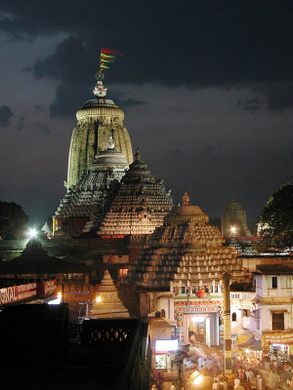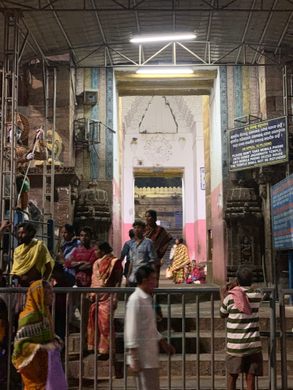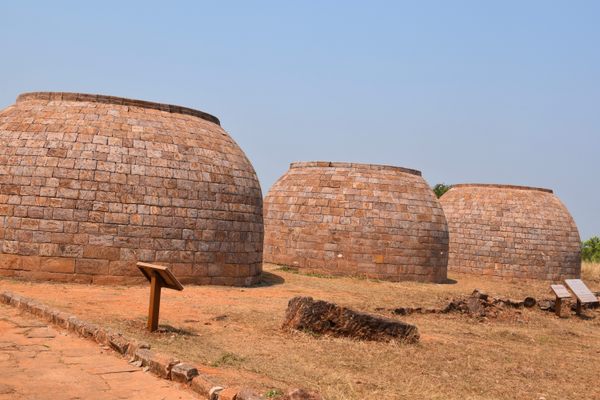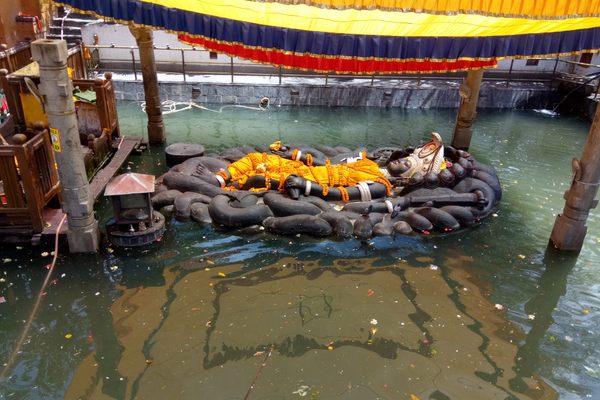Jagannath Temple
This 11th-century temple gave rise to the word "juggernaut," as well as some mysteries that defy scientific explanation.
While there are many remarkable temples in India, complete with exquisite architecture, awe-inspiring legends, and colorful rituals, Jagannath Temple in Puri is in a league of its own.
The 11th-century temple is one of four Char Dham temples in India, each one located at a cardinal point on the compass. Jagannath is a huge complex, covering an area of 400,000 square feet, containing at least 120 temples and shrines. Rich, intricate sculptures and carvings, and soaring architecture, make it one of the most magnificent monuments of India.
The temple is famous for the annual Rath Yatra, or chariot festival. During the festival, massive chariots carrying large wooden representations of the three principal deities are pulled through the streets surrounding the temple. The size and force of these chariots, coupled with the fervor of the teeming crowds, gave rise to the term “juggernaut.”
A British chaplain who observed the festival in the 19th century said that he saw devotees throwing themselves under the wheels of the chariots, and coined the term juggernaut to mean an unstoppable force. To him, a Christian missionary, juggernaut was a symbol of an overpowering, violent, and dangerous force.
But Rath Yatra is not all this spectacular temple is famous for. It’s also renowned for its mystical and spiritual power, the many legends and beliefs that surround it, and some mysteries that defy scientific explanation.
For instance, the flag at the top of the temple’s main spire floats in the opposite direction of the wind. There does not appear to be any scientific explanation for this, nor for the fact that no birds or planes fly over the temple.
Adding to the mystical nature of the temple, the building is constructed in such a way that it never casts a shadow. A metal sculpture at the top of one of the towers, called the Sudarshan Charka, can be seen from every corner of Puri city, and always seems to be facing the viewer. When you enter the Jagannath Temple through the Singadwaram door, you can hear the sound of the nearby ocean waves (Puri is on the Sea of Bengal). But after the first step, you cannot hear the ocean waves at all. In fact, you cannot hear ocean waves anywhere inside the temple complex.
According to one legend, the temple kitchen—which feeds between 25,000 to 100,000 people daily—is presided over by the Goddess Mahalaxmi, and if she is displeased with the food, a dog will mysteriously appear and all the food must be buried. The cooks will have to begin preparing the food again from scratch. Jagannath Temple is also home to an 1,800 year-old ritual. Every day a priest climbs up the equivalent of 45 stories to change the flag, and it is said that if this ritual is skipped for even one day, the temple will remain shut for 18 years.
Know Before You Go
Jagannath Temple is not open to non-Hindus. However, all are welcome to attend the Rath Yatra Festival in July each year, which attracts about one million people.




















Follow us on Twitter to get the latest on the world's hidden wonders.
Like us on Facebook to get the latest on the world's hidden wonders.
Follow us on Twitter Like us on Facebook